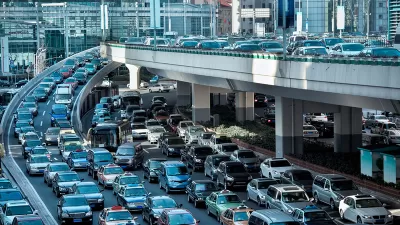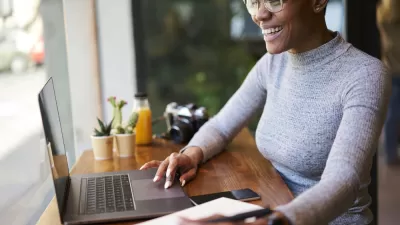Unsurprisingly, American workers whose commutes have been reduced or eliminated by new remote work arrangements are spending more time on rest, leisure, and childcare activities.

With the rise of remote work during the COVID-19 pandemic leading to a seismic shift in commuter behavior, Americans are, on aggregate, spending 60 million fewer hours commuting every day. So what is everyone doing with all that extra time? David Dam, Davide Melcangi, Laura Pilossoph, and Aidan Toner-Rodgers sought to find out, explaining their results in Liberty Street Economics.
According to the article, “Using detailed data from the American Time Use Survey (ATUS), we find that employed individuals allocate their saved commute time toward leisure activities and sleeping, while reducing overall work hours.” The researchers found a “substantial fall in time spent working,” with the decrease only partially offset by the increase in work-from-home hours. The study also found that “notable increases in leisure time and sleeping,” particularly among younger Americans, “who reported spending more time at social events, eating at restaurants or bars, and exercising” and spent more time with people outside their own households than older Americans, a fact likely reflective of higher COVID-19 risks for older people.
The researchers conclude that “The findings lend credence to the various reports on employees’ preferences for flexible work arrangements, given that cutting the commute enables people to spend their time on other activities, such as childcare or leisure.”
FULL STORY: What Have Workers Done with the Time Freed up by Commuting Less?

Alabama: Trump Terminates Settlements for Black Communities Harmed By Raw Sewage
Trump deemed the landmark civil rights agreement “illegal DEI and environmental justice policy.”

Planetizen Federal Action Tracker
A weekly monitor of how Trump’s orders and actions are impacting planners and planning in America.

The 120 Year Old Tiny Home Villages That Sheltered San Francisco’s Earthquake Refugees
More than a century ago, San Francisco mobilized to house thousands of residents displaced by the 1906 earthquake. Could their strategy offer a model for the present?

Ken Jennings Launches Transit Web Series
The Jeopardy champ wants you to ride public transit.

BLM To Rescind Public Lands Rule
The change will downgrade conservation, once again putting federal land at risk for mining and other extractive uses.

Indy Neighborhood Group Builds Temporary Multi-Use Path
Community members, aided in part by funding from the city, repurposed a vehicle lane to create a protected bike and pedestrian path for the summer season.
Urban Design for Planners 1: Software Tools
This six-course series explores essential urban design concepts using open source software and equips planners with the tools they need to participate fully in the urban design process.
Planning for Universal Design
Learn the tools for implementing Universal Design in planning regulations.
Clanton & Associates, Inc.
Jessamine County Fiscal Court
Institute for Housing and Urban Development Studies (IHS)
City of Grandview
Harvard GSD Executive Education
Toledo-Lucas County Plan Commissions
Salt Lake City
NYU Wagner Graduate School of Public Service





























